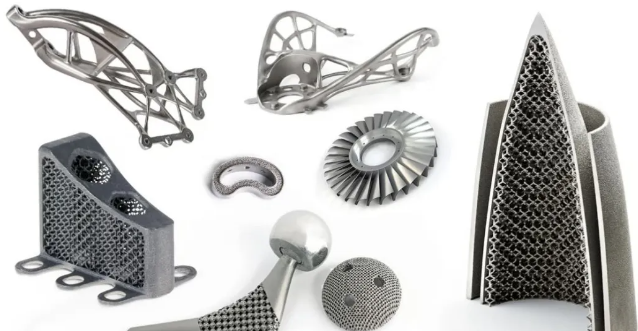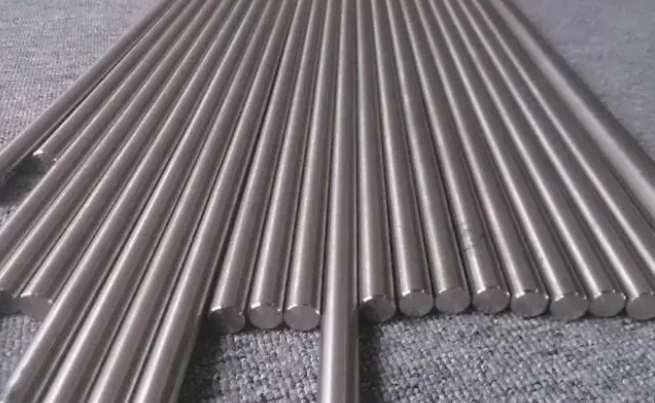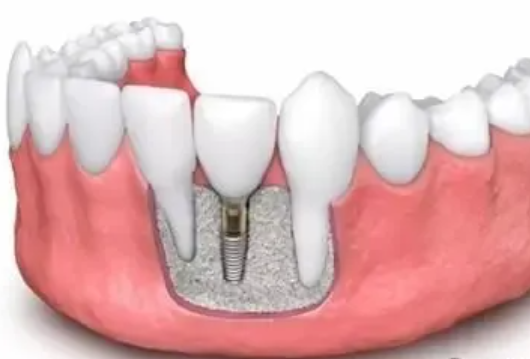3D printing, also known as Additive Manufacturing (AM), is an advanced manufacturing technology that encompasses multiple disciplines. 3D printing uses a computer-aided design (CAD) model as a blueprint. Through software layering and discrete CNC (Computer Numerical Control) systems, it converts a three-dimensional entity into several two-dimensional planes. It employs adhesive raw materials such as powdered metal, plastic, ceramic, and resin to construct objects layer by layer.
The inherent qualities of titanium with the unique features of 3D printing exponentially increase the advantages
- Titanium in Additive Manufacturing
- They are widely used in aerospace, joint replacement, surgical tools, racing cars, bicycle frames, electronics, and other high-performance products.
- High mechanical strength, high strength-to-weight ratio, better corrosion resistance than stainless steel.
- It makes rockets and airplanes lighter, saving fuel and increasing payload capacity.
- Makes electronic products like smartphones and VR glasses lighter.
- Suitable for medical implants due to biocompatibility and good mechanical properties.
- 3D printing enhances these benefits by efficiently manufacturing this expensive metal with lower raw material consumption and less waste.
- It allows for complex designs like internal channels and lattice-filled parts to reduce weight, which traditional methods cannot achieve.
- Cost-effective production of unique parts such as patient-specific implants, prototypes, and research tools.
Uses of 3D Printed Titanium Alloys
- Precision Products and Electronics
- Produces thin-walled, intricate titanium metal parts.
- Used in watch cases for brands like Panerai and Holthinrichs, and soon in Apple Watch Ultra.
- Honor’s 2023 foldable phone Magic V2 uses a 3D printed paduan titanium hinge cover, making it lighter and 150% stronger than the aluminum version.
- Medical and Dental Implants
- Successful use in spine, hip, knee, and limb implants.
- Customizable porous structures promote bone integration and mass customization for better treatment outcomes.
- Increasing regulatory approval and demand for 3D printed titanium implants.
- Enables the production of implants designed for individual patients, especially those with rare diseases.
- Example: A UK surgeon completed four wrist surgeries in one day using patient-specific 3D-printed titanium plates.
- Corelink’s 3D-printed titanium screws and FingerKit Consortium’s patient-specific titanium finger joints.
- Manipal Hospitals in India used 3D-printed titanium to replace a cancer patient’s ribcage, resulting in full recovery.
- Positive trial outcomes using custom 3D printed titanium talus bones for ankle replacement surgery.
- FDA Approvals in 2023 for 3D Printed Titanium Implants
- Restor3d’s first all-metal 3D printed patient-specific device for total ankle arthroplasty.
- SurGenTec’s posterior 3D printed titanium sacroiliac joint fusion system Tilink-P.
- FloSpine’s Tri-Largo cervical interbody system for spinal support.
- Eminent Spine’s 3D cervical interbody fusion system.
- ChoiceSpine’s Blackhawk Ti 3D printed cervical spacer system.
- Corelink’s Siber Ti sacroiliac joint fusion system.
- Precision Products and Electronics
- Semiconductor Industry
- ASML has shifted to 3D printing titanium for its wafer production carrier trays, saving 64% in raw materials and speeding up delivery times compared to traditional forging methods.
- Norsk Titanium uses Directed Energy Deposition (DED) to 3D print near-net-shape preforms weighing 80 kilograms (approximately 176 pounds) for semiconductor wafer production.
- Norsk collaborates with the Dutch Hittech Group to develop these preforms, used in ASML’s lithography systems.
- ASML, a key player in the global semiconductor market, is known for producing the world’s only extreme ultraviolet (EUV) lithography machines.
- U.S. Navy
- The U.S. Navy is adopting 3D-printed titanium to save time and money and reduce reliance on foreign supply chains.
- Domestic capabilities for producing large titanium castings for high-performance centrifugal pumps are limited, leading to long delivery times and high costs associated with carbon-intensive titanium materials.
- Partnering with IperionX for recycled titanium powder and Carver Pump for rapid prototyping, the Navy aims to significantly reduce the delivery time for critical components, improve equipment availability, and sustainably rebuild the U.S. titanium metal supply chain.
Understanding Titanium
- Titanium Murni:
- Not typically used in engineering applications but is common in biomedical markets for knee and hip implants.
- Paduan Titanium:
- Controlled mixtures of metals provide specific mechanical properties.
- Widely used in industries requiring precise part performance.
- Metal material suppliers provide titanium for casting and specially formulated titanium powder for rapid prototyping.
- Titanium Murni:
Titanium for Additive Manufacturing
- Nilai 5 Titanium (Ti-6Al-4V):
- The most commonly used titanium alloy in additive manufacturing.
- Ideal for aerospace, automotive, and military prototypes and functional parts.
- Excellent for manufacturing complex geometric parts and precision tools.
- Nilai 23 Titanium (Ti-6Al-4V ELI):
- Biocompatible alloy used in medical implants and prosthetics.
- Beta 21S Titanium:
- Higher strength than traditional titanium alloys like Ti-6Al-4V.
- Superior oxidation and creep resistance compared to alloys like Ti-15V-3Cr.
- Lowest hydrogen absorption efficiency among titanium alloys.
- Ideal for orthopedic implants and aerospace engine applications.
- Widely used in orthodontics.
- Grades 1 and 2 Cp-Ti (Commercially Pure Titanium):
- Biocompatible, widely used in the medical field.
- TA15 Titanium:
- Near-alpha titanium alloy containing aluminum and zirconium additives.
- Parts made from TA15 have a high strength-to-weight ratio, high load capacity, and temperature resistance.
- Used for heavy-duty parts in aircraft and engine manufacturing.
- Nilai 5 Titanium (Ti-6Al-4V):
How to 3D Print Titanium
Powder Bed Fusion Processes:
- Most common metal 3D printing technologies for titanium alloys.
- Techniques include Laser Powder Bed Fusion (LPBF) and Electron Beam Powder Bed Fusion (EBPBF).
- Powder bed fusion is widely used for lightweight parts in aerospace, racing, and medical implants.
- Binder jetting is typically used for smaller medical instruments made of titanium.
- Example: Using a vacuum to collect unused titanium powder for reuse in the Trumpf TruPrint 3000.
Various Metal 3D Printing Technologies for Titanium Alloys
Powder Bed Fusion (PBF)
Laser Powder Bed Fusion (LPBF):
- Also known as Selective Laser Melting (SLM).
- Uses a high-power laser to fuse powdered metal layer by layer.
- Parameters must be optimized for each titanium alloy to control porosity, microstructure, and final material properties.
Electron Beam Powder Bed Fusion (EBPBF):
- Also known as Electron Beam Melting (EBM).
- Uses a high-power electron beam instead of a laser.
- Produces coarser microstructures due to higher process temperatures and slower cooling rates.
Other Additive Manufacturing Methods for Titanium
- Direct Energy Deposition (DED)
- Rapid Plasma Deposition (RPD)
- Binder Jetting
3D Printing Process
- Starts with selectively scanning a metal powder bed.
- All geometry information is provided by a CAD model.
- Powder characteristics such as particle shape (spherical preferred) and size distribution are crucial.
- Metal powders can be produced via gas atomization, rotating atomization, plasma rotating electrode process, and water atomization.
Metal 3D Printers in the Market for Titanium Alloys
Powder Bed Fusion (PBF)
- 3D Systems: Offers three types of titanium materials compatible with their PBF printers.
- EOS: Provides five titanium material options for four metal PBF printers.
- GE Additive: Offers titanium and titanium alloys for their Concept Laser series SLM printers.
- SLM Solutions: Provides three titanium alloys for their SLM printers.
- Velo3D: Offers titanium solutions for their PBF printers.
- Trumpf: Designs laser metal fusion printers specifically for titanium part production.
- Renishaw: Widely used for producing titanium parts in medical and dental fields.
- AddUp: Offers the FormUp350 laser metal fusion printer compatible with titanium.
Binder Jetting
- Digital Metal: Provides a titanium alloy for their binder jetting printers.
- Desktop Metal: Offers titanium metal for their Studio, X series, and Production System printers.
Electron Beam Melting (EBM)
- GE Additive: Offers titanium and titanium alloys for their EBM printers.
- Cold Spray
- Spee3D: Announced capability for titanium 3D printing in 2022.
Fused Deposition Modeling (FDM) and Extrusion
- Desktop Metal: Provides proprietary filament filled with titanium alloy for three of their printers using extrusion-bonded metal deposition technology.
Characteristics of 3D Printed Titanium
Microstructure Evolution:
- A key consideration in both powder bed processes.
- The interaction of energy density and heat with the material lattice affects mechanical properties.
- Complex thermal processing cycles during 3D printing impact material performance.
Research and Standards:
- Significant research indicates excellent structural integrity of 3D-printed titanium parts.
- MELD Manufacturing data (March 2021) confirmed their process meets ASTM and AMS standards for printed forged materials.
Collaboration and Data Generation
- Data was generated in collaboration with the National Center for Manufacturing Sciences (NCMS), Army Research Laboratory (ARL), and Advanced Manufacturing, Materials, and Processes (AMMP) program.
- Testing was conducted using Ti-6Al-4V (Ti64) material, also known as ASTM Grade 5.
Testing Results
- Printed materials exceeded ASTM standards in yield strength, ultimate tensile strength, and elongation in all axial directions, including the Z direction (through the print layers).
Medical Manufacturing and Regulatory Approvals
- Increasing adoption of additive manufacturing technologies by medical manufacturers.
- The growing number of FDA-approved titanium-based 3D printed surgical implants.


